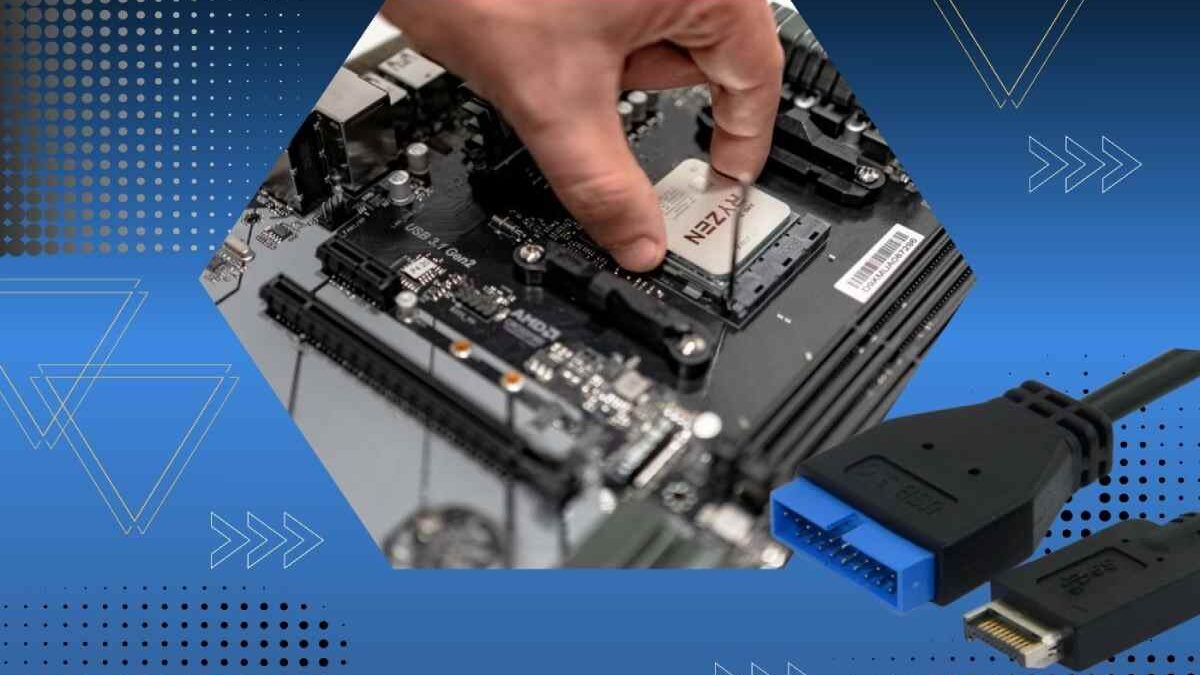Knowing how many internal USB headers your motherboard has is crucial, whether you’re creating a PC or upgrading your desktop. These small connectors power the USB ports on the front panel of your computer case, as well as other internal USB devices, such as RGB controllers, AIO coolers, and card readers.
Table of Contents
What Is an Internal USB Header?
An internal USB header is a connector found on your motherboard that allows you to link USB ports and devices inside the case. These headers are different from the rear I/O USB ports because they aren’t directly exposed outside the case — they connect to internal components or front-panel ports.
There are different types:
- Two USB 2.0 ports are supported via USB 2.0 headers, which are usually black.
- One or two USB 3.0 ports are supported via USB 3.0 headers, which are typically blue in colour.
- USB 3.2 Gen 2 headers (usually 20-pin Type-E): For modern high-speed ports
How to Measure Your Internal USB Header Count
1. Check Your Motherboard Manual
Your motherboard manual is the most reliable source of information. Look in the specifications or the motherboard layout diagram to see:
- USB 2.0 headers: usually labelled “USB_1” or “F_USB1”
- USB 3.0 headers: labelled “USB3_1”, “F_USB3”
2. Physically Inspect the Motherboard
If you don’t have the manual, open your case and look for:
- A USB 2.0 header connector with nine pins
- A 19-pin USB 3.0 header connector
- A 20-pin connector (flat rectangle) for USB 3.2 Gen 2
These headers are usually labelled directly on the board or with small stickers nearby.
3. Use Software Tools
You can also install motherboard utility tools like:
- Use CPU-Z or Speccy to get the motherboard model info
- Then search your motherboard model online for header specs
Why Internal USB Headers Matter
You need enough internal headers if:
- Your case has front USB ports.
- You want to install RGB controllers or AIO coolers that require a USB connection.
- You use internal expansion devices (such as card readers and fan hubs).
- If you run out of headers, USB header splitters or PCIe expansion cards are available to add more.
Tips Before Buying a Motherboard
When selecting a motherboard:
- Count your internal USB needs first
- Examine the front panel of your PC case (USB 2.0, 3.0, or Type-C).
- Check if your coolers/controllers need USB connections
- If your build is USB-intensive, prioritise motherboards with two or more internal headers, especially for custom cooling, RGB systems, or multiple USB ports on the front.
Conclusion
Most modern motherboards offer 1 to 3 internal USB headers, depending on the size and chipset. Knowing how many internal headers your motherboard supports ensures proper connectivity for your case, coolers, and other USB devices. Always refer to your motherboard manual or product page to confirm.
If you’re planning a new build or upgrading your case, double-check this feature — a small oversight here can limit your setup’s functionality.

